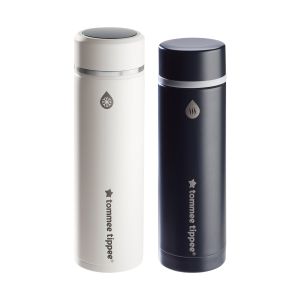
This is a demo store. No orders will be fulfilled.
Subscription orders can be cancelled at anytime. Free delivery on all subsequent subscription orders. Find out more about subscriptions.
They’re easy and fuss free
Your products are automatically sent to you
You save up to 10% when you sign up for a subscription
You can cancel at any time
So, you���ve expressed breast milk and popped it in the freezer for storage. But now you're wondering how best to defrost it, ready to feed your little one.
To help you out, we're going to run through how to safely thaw frozen breast milk and cover some top breast milk storage tips to save you both time and effort.
When it comes to defrosting breast milk that���s been frozen, it's important to make sure it stays safe for your baby. So, let's break down the process step by step.
You can gradually defrost frozen breast milk in the fridge.
You can defrost frozen breast milk that���s in a sealed container by putting it in a jug of warm water.
Alternatively, you can run warm water at a maximum temperature of 37��C over a bottle or bag of frozen breast milk.
Breast milk can be given to a baby cold if they���ll take it this way, but if they prefer their feed warmed slightly, you can warm it up once it's defrosted by:
Test the temperature of the milk before feeding it to your baby. You can do this by placing a drop on your wrist or the back of your hand. The milk should feel warm, not hot.
It's important to note that breast milk shouldn���t be reheated if your baby doesn���t finish their feed. So, it���s a good idea to warm only a small amount at a time.
Don���t warm breast milk in a microwave. This can destroy the nutrients and cause hot spots that can burn your baby's mouth.
The amount of time that breast milk takes to defrost depends on which method you choose:
Once fully thawed, defrosted breast milk that was previously frozen can be kept at room temperature for up to two hours or stored in the fridge for up to 24 hours.
Let���s run through some things to avoid when you���re defrosting breast milk for your baby.
We know that pumping, freezing and defrosting breast milk is a lot to think about! The following tips may help simplify the process and reduce the risk of any precious breast milk going to waste.
When getting milk out of storage to feed your baby, use a first-in, first-out approach. It can help to label your expressed milk with the date it was pumped before you store it in the freezer, so you know you're using the oldest milk first.
Our pre-sterilised breast milk storage bags are made for breast milk, and help it thaw faster.
Most ice cube trays have individual sections that hold around 1oz each. These can be handy for measuring out the right amount of breast milk needed for each feed.
This means that if the bag your breast milk was frozen in does split, it���s caught and not wasted.
Breast milk expands as it freezes, so don���t fill your storage container more than three-quarters full. Always leave some room for expansion.
Some materials like glass can crack at very low temperatures, meaning that your breast milk could go to waste.
It���s recommended that breast milk is thawed and used within 90 days of being frozen. This is because the fat, calories and protein in breast milk decrease over time once it's frozen.
However, breast milk can be safely stored in the freezer at -18��C or below for up to six months. If it���s not used within this time, it can be used in milk baths or to treat rashes.
Slowly defrosting breast milk in the fridge is best, but if you need to thaw frozen breast milk fast, you can defrost it in a jug of warm water or run it under running warm water.
If it's been defrosted in the fridge, breast milk should be used within 24 hours. You should start counting the time when the milk is completely thawed and not from when you first put it in the fridge.
Breast milk that's been frozen can sometimes smell different from fresh ��� some parents say it smells like soap or has a slightly metallic taste. This is because of the release of fatty acids but won't cause any harm.
Don���t worry, if you���ve followed the guidelines we've covered above, your thawed breast milk will be safe to give to your baby.